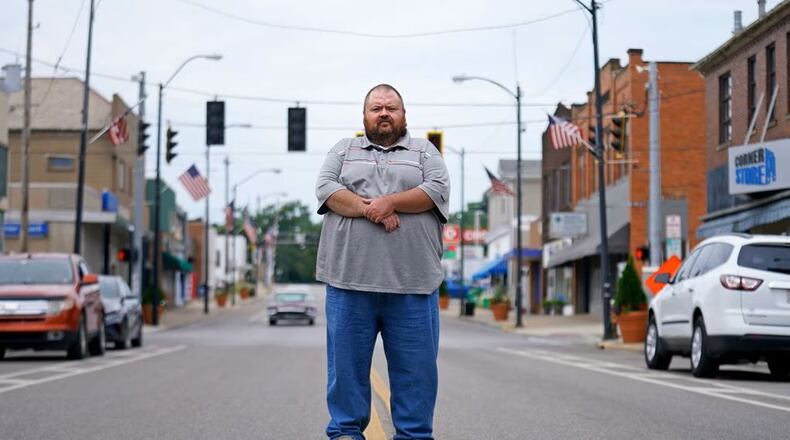Here are snapshots of people who live in East Palestine or are involved in the response in their own words:
East Palestine Mayor Trent Conaway
Credit: Matt Freed for the Atlanta Journal Constitution
Credit: Matt Freed for the Atlanta Journal Constitution
In East Palestine, the job of mayor is a part-time role and has been held for three-and-a-half years by Trent Conaway, a manager at a refractories plant, which makes materials for the steel industry. He recently left his plant manager job because of the demands of his elected position to respond to the derailment.
Norfolk Southern’s early move after the derailment “covering up the tracks and putting the tracks down, I think that was the biggest mistake they have made,” Conaway said.
“They seem to make a corrective action on that. They’ve dug the tracks up now, everything’s dug up under the tracks. But there’s still contamination down there. So they’re still working, you know, getting that done,” he said.
Today, “70% of the people just want to move on and get this over with, get back to normal, and 30% still are pressing the issue, have health concerns,” said Conaway. “We understand that.”
East Palestine resident Jessica Conard
“We just bought our home last year, so we’re not really in a place financially to leave,” said Jessica Conard, who lives along the railroad tracks and about 2 miles from the derailment site. “It would be financial suicide.
“But every single day I wake up and think ... ‘Am I exposing my children to hazardous chemicals? Am I giving my kids cancer by living here? You know, are we gonna get cancer in five, 10, 20 years?’” Conard said. “It’s very stressful. It’s terrifying. You know, we’re trying to move on. We’re trying to live our lives.”
Conard’s home is on a well, and officials say drinking water is safe. But she isn’t drinking the well water.
“I mean, we have to wash our clothes, we have to shower in it. There’s certain things that you have to do. But at this point I don’t see us drinking it anytime soon.”
Former East Palestine resident Zsuzsa Gyenes
Zsuzsa Gyenes has been staying in hotels since the derailment, most recently in Cranberry, Pennsylvania, about 40 minutes from East Palestine. She said her 9-year-old son is “doing okay, for the most part.”
Gyenes’s son has attended school online since the family moved out of their duplex apartment.
“There’s really not very many hotels around East Palestine. It’s a pretty rural area,” Gyenes said. The hotels “filled up pretty quickly,” with displaced residents and contractors, she said.
“I’m sure it’s really hard for him to be living in a hotel for this long not having a home anymore, losing all his stuff,” she said. “It’s scary. I mean, the unknown. ... We could be facing cancer in 10, 15 years. We don’t know what’s going to happen.”
Norfolk Southern CEO Alan Shaw
Credit: AP
Credit: AP
Norfolk Southern CEO Alan Shaw, a lifer with the railroad, was relatively new to the top job when the crash happened. He joined the railroad in 1994 and eventually took on executive roles including vice president of intermodal operations, chief marketing officer and president before becoming CEO in May 2022.
Railroad chief executives aren’t often well-known to the public. But soon after the crash, Shaw appeared at a CNN town hall and has testified before Congress. In an interview, Shaw said he returns to Ohio frequently to assess what’s happening.
“I go back almost every week, and I’m really taking the lead from the community, on what we can do to help the community recover and what we can do to help the community thrive,” Shaw said.
“I’ve developed a deep affection for many of the folks who live in that community and the community itself,” he said.
“We’re not done,” Shaw said. “We’ve always said there’s more to be done here.”
About the Author


